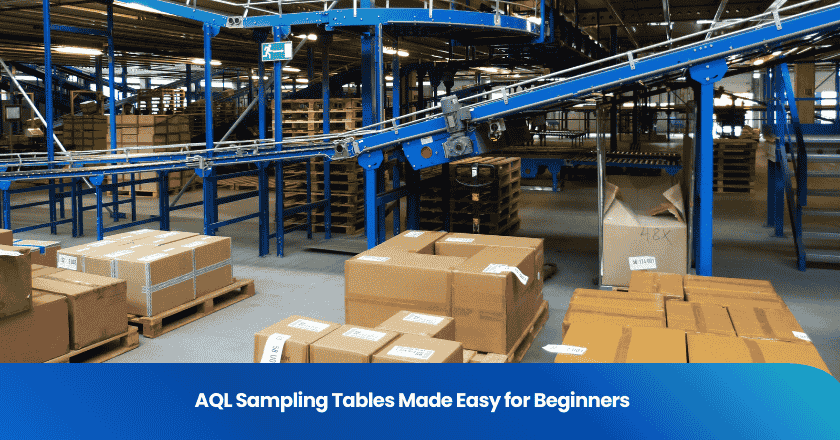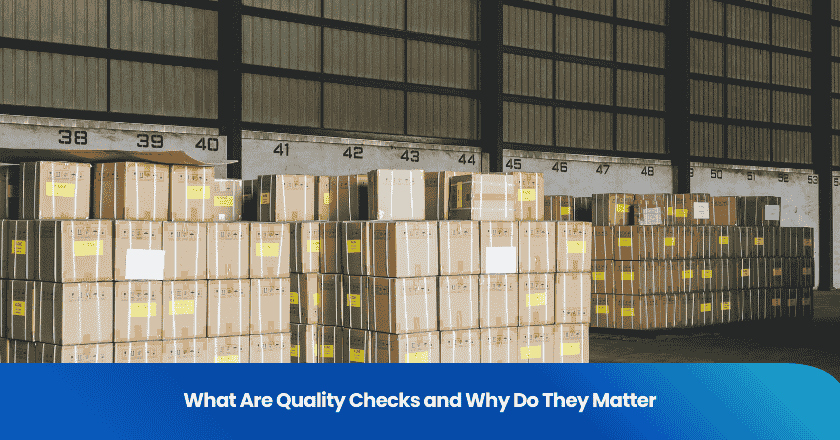
You encounter aql sampling tables when you need to inspect products and maintain consistent standards. These tables help you decide how many items to check and when to accept or reject a batch. Understanding the acceptance quality limit helps you set clear expectations during product inspections. Aql gives you a practical way to apply quality control in your daily work. You can quickly learn how to read a sampling table and make decisions with confidence.
Tip: Mastering aql simplifies your inspection process and improves your decision-making.
Key Takeaways
- AQL helps you set clear limits on how many defects you can accept in a product batch, saving time and keeping quality consistent.
- Sampling tables guide you to the right sample size and defect limits based on your lot size and inspection level, making inspections easier and fairer.
- Choose AQL levels based on defect types and product risk to balance quality control with cost and customer expectations.
- Follow step-by-step use of AQL tables: find lot size, pick inspection level, check sample size, and compare defects to acceptance numbers for clear decisions.
- Avoid common mistakes by double-checking lot size, defect categories, and inspection level, and always select samples randomly for accurate results.
What Is Acceptance Quality Limit?
AQL in Quality Control
You use aql to set clear standards for product inspections. The acceptance quality limit defines the maximum number of defects you can accept in a batch before you reject it. This concept helps you decide how many samples to inspect and what results are acceptable. When you apply aql, you rely on acceptance sampling to check a portion of the lot instead of every item. This method saves time and resources while maintaining confidence in your inspection results.
Aql works with different levels, which you choose based on the risk you are willing to take. You select an aql value that matches your product type and customer expectations. For example, you might set a lower aql for critical items and a higher one for less important products. The acceptance quality limit guides you in making these decisions.
Note: You should always match your aql level to the type of product and the expectations of your customers.
Why AQL Matters
Aql matters because it gives you a practical way to manage risk in inspections. You balance the need for quality with the realities of production. By using acceptance sampling, you avoid inspecting every item, but you still maintain control over the process. The acceptance quality limit helps you set acceptance criteria that are fair to both you and your supplier.
You improve your decision-making when you understand how aql works. You can explain your inspection process to others and justify your choices. Aql supports quality control by providing a clear framework for inspections. You use it to protect your business and ensure customer satisfaction.
Here is a simple table to show how aql levels relate to defect types:
| Defect Type | Typical AQL Level | Impact on Decision |
|---|---|---|
| Critical | 0.01 - 0.1 | Reject batch if any found |
| Major | 0.25 - 1.0 | Accept small number, reject if exceeded |
| Minor | 2.5 - 4.0 | Accept more, focus on overall quality |
You see that aql helps you set clear limits for each defect type. You use these limits to guide your inspections and make consistent decisions.
What Is a Sampling Table?
Structure of AQL Tables
You use a sampling table to simplify your inspection process. Aql tables organize information so you can quickly find the sample size and acceptance criteria for your lot. Each table has rows and columns that show different lot sizes and aql levels. You select your lot size from the left column. You choose your aql level from the top row. The intersection gives you the sample size and the number of defects allowed.
Aql tables often include codes for inspection levels. These codes help you adjust the strictness of your inspection. You see levels like "General Inspection Level I, II, III" or "Special Inspection Levels S-1 to S-4." You pick the level based on your product and risk tolerance. The table then guides you to the right sample size.
Tip: Always check the inspection level before using a sampling table. This step ensures you select the correct sample size for your aql.
Here is a simple example of how aql tables look:
| Lot Size | Inspection Level | Sample Size | AQL 1.0 | AQL 2.5 |
|---|---|---|---|---|
| 1200 | II | 80 | 2 | 5 |
| 3200 | II | 125 | 3 | 7 |
How Sampling Tables Work
You apply aql tables during acceptance sampling. You start by identifying your lot size and deciding on your aql level. The sampling table tells you how many units to inspect. You check the sample for defects. If the number of defects is within the allowed limit, you accept the lot. If defects exceed the limit, you reject the lot.
Aql tables make acceptance sampling efficient. You do not need to inspect every item. You rely on statistical principles to ensure quality. The sampling table gives you confidence in your decision. You balance inspection effort and risk using aql.
You use aql tables for different products and industries. The process stays consistent. You select the lot size, inspection level, and aql. The sampling table guides your inspection. You make decisions based on clear criteria.
Note: Using aql tables helps you maintain fairness and consistency in your inspections.
AQL Level Setting
Choosing the Right AQL
You face important decisions when you approach aql level setting. You must choose the right aql for your product and inspection goals. The aql you select determines how strict your inspection will be. You need to consider the type of product, customer expectations, and the potential impact of defects. You use aql level setting to match your inspection process to the risk you are willing to accept.
You often see three main defect categories: critical, major, and minor. Each category requires a different aql. For critical defects, you set the aql very low. You cannot accept any critical defects because they may cause harm or make the product unusable. For major defects, you set a moderate aql. These defects affect function or appearance but do not pose safety risks. For minor defects, you set a higher aql. These issues do not impact use or safety, so you can accept more of them.
Note: Aql level setting helps you balance the risk between you and your supplier. If you set the aql too low, you may reject good batches and increase costs. If you set it too high, you may accept too many defects.
Defect Categories
You use defect categories to guide your aql level setting. Here is a simple table to help you understand how you might set aql for each defect type:
| Defect Category | Typical AQL | Description |
|---|---|---|
| Critical | 0.01 - 0.1 | Not allowed, safety or legal issue |
| Major | 0.25 - 1.0 | Affects function or appearance |
| Minor | 2.5 - 4.0 | Small, does not affect use |
You must define acceptance criteria for each defect category before you start inspections. You use the aql level setting process to make sure your acceptance quality limit matches your needs. You protect your business and your customers by choosing the right aql for each situation. You also create a fair process for your supplier.
Tip: Review your aql level setting regularly. Product changes or new customer requirements may require you to adjust your aql.
How to Use AQL Tables
Understanding how to use aql tables gives you control over your inspection process. You can follow a clear path from identifying your lot size to making a final decision. This section will guide you through each step, using a practical example to make the process easy to follow.
Find Lot and Sample Size
You start by determining your lot size. The lot size is the total number of units in the batch you want to inspect. Once you know this number, you move to the next step—selecting the inspection level. Most aql tables offer several inspection levels, such as General Inspection Levels I, II, and III. Level II is the most common choice for general inspections.
Follow these steps to find your sample size:
1. Identify your lot size.
For example, you have a batch of 2,000 units.
2. Choose the inspection level.
Suppose you select General Inspection Level II.
3. Locate the code letter.
Use the aql tables to match your lot size and inspection level. For 2,000 units at Level II, you might find code letter "L".
4. Find the sample size.
Look up code letter "L" in the sampling table. The table tells you how many units to inspect. For code letter "L," the sample size could be 80 units.
Tip: Always double-check your lot size and inspection level before moving forward. This step ensures you use the correct sample size from the aql tables.
Acceptance and Rejection Numbers
After you determine your sample size, you need to set your acceptance and rejection numbers. These numbers tell you how many defective units you can find before you must reject the batch. The aql tables provide these numbers based on your chosen aql level.
Here is how you use the aql tables to find these numbers:
1. Select your aql level.
For example, you choose an aql of 1.0 for major defects.
2. Check the acceptance and rejection numbers.
In the aql tables, find the row for your sample size (80 units) and the column for your aql level (1.0). The table might show "2/3." This means you can accept the lot if you find 2 or fewer defective units. If you find 3 or more, you must reject the lot.
3. Inspect your sample.
Randomly select 80 units from your batch. Check each unit for defects according to your aql sampling guidelines.
4. Make your decision.
- If you find 2 or fewer defects, accept the batch.
- If you find 3 or more defects, reject the batch.
Note: The acceptance and rejection numbers help you make objective decisions. You do not need to guess or negotiate. The aql tables give you clear rules.
Example Walkthrough
Let’s walk through a simple example:
- Lot size: 2,000 units
- Inspection level: General II
- Sample size from aql tables: 80 units
- AQL for major defects: 1.0
- Acceptance number: 2
- Rejection number: 3
You inspect 80 units and find 1 major defect. Since 1 is less than or equal to the acceptance number, you accept the batch. If you had found 3 major defects, you would reject the batch.
| Step | Your Choice / Result |
|---|---|
| Lot Size | 2,000 units |
| Inspection Level | General II |
| Sample Size | 80 units |
| AQL Level | 1.0 |
| Acceptance Number | 2 |
| Rejection Number | 3 |
| Defects Found | 1 |
| Decision | Accept the batch |
You can repeat this process for different defect categories and aql levels. The aql tables always guide your decisions. You follow the same steps each time, which keeps your inspections consistent and fair.
Remember: Using aql tables helps you apply aql sampling guidelines with confidence. You protect your business and ensure product quality with every inspection.
Common Mistakes with Sampling Tables
Pitfalls to Avoid
You may find aql sampling tables easy to use, but common mistakes can affect your inspection results. One frequent error involves choosing the wrong lot size. If you miscount your batch, you select the wrong sample size from the aql table. This mistake leads to unreliable results and weakens your quality assurance process.
Another pitfall involves misunderstanding defect categories. You must clearly define what counts as critical, major, or minor defects before you start. If you mix up these categories, you risk accepting batches that do not meet your standards. You also need to avoid skipping the inspection level step. If you forget to set the inspection level, you may pick a sample size that does not match your risk tolerance.
Some inspectors rush through the process and do not randomize their samples. If you do not select units randomly, your results may not represent the entire batch. This error reduces the effectiveness of aql sampling and can harm your quality assurance efforts.
Tip: Always double-check your lot size, defect categories, and inspection level before using the aql table.
Best Practices
You can avoid mistakes by following a few best practices. Start by documenting your inspection plan. Write down your lot size, inspection level, aql values, and defect definitions. This habit keeps your process consistent and transparent.
Use the aql table step by step. First, identify your lot size. Next, select the correct inspection level. Then, find the sample size and acceptance numbers. Always randomize your sample selection to ensure fair results.
You should review your aql settings regularly. Product changes or new customer requirements may require you to adjust your aql values. Stay updated on industry standards to keep your quality assurance strong.
A simple checklist can help:
- Confirm lot size and inspection level.
- Define defect categories.
- Select random samples.
- Record findings and decisions.
- Review aql settings as needed.
By following these steps, you strengthen your quality assurance process and make the most of aql sampling tables.
You now understand how aql sampling tables support your quality control process. You use aql to set clear inspection standards, define defect categories, and make objective decisions. Practicing with aql tables helps you build confidence and consistency in your inspections.
- Review aql concepts regularly.
- Apply aql tables to real inspection scenarios.
- Explore more resources to deepen your knowledge of aql and quality control.
Keep using aql to protect your business and deliver reliable products.
FAQ
What does AQL mean in product inspections?
AQL stands for Acceptance Quality Limit. You use it to set the maximum number of defects allowed in a sample before you reject a batch. This method helps you maintain consistent quality standards.
How do you choose the right sample size?
You determine your sample size by checking your lot size and inspection level in the sampling table. The table guides you to the correct number of units to inspect for reliable results.
Can you use AQL tables for any product type?
You can apply AQL tables to most products. You need to adjust defect categories and AQL levels based on the product’s risk and customer requirements. Always review your criteria before inspections.
What happens if you find more defects than allowed?
If you find defects that exceed the acceptance number, you must reject the batch. This process ensures that only products meeting your standards reach your customers.
Why is random sampling important?
Random sampling ensures that your inspection results represent the entire batch. You avoid bias and improve the accuracy of your quality control decisions by selecting units randomly.
Grow your business with TradeAider Service
Click the button below to directly enter the TradeAider Service System. The simple steps from booking and payment to receiving reports are easy to operate.



